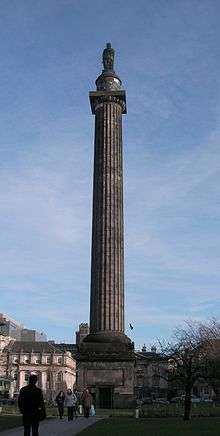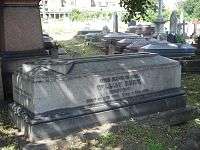William Burn



William Burn FRSE (20 December 1789 – 15 February 1870) was a Scottish architect. A talented architect, he received major commissions from the age of 20 until his death at 80. He built in many styles and was a pioneer of the Scottish Baronial Revival.
Life
Burn was born on Rose Street[1] in Edinburgh, the son of architect Robert Burn. He was educated at the Royal High School.
After training with the architect Sir Robert Smirke, designer of the British Museum, he returned to Edinburgh in 1812. Here he established a practice from the family builders' yard. In 1841, he took on a pupil, David Bryce, with whom he later went into partnership. From 1844 he worked in London, where he took on his nephew John Macvicar Anderson as a partner.
In 1827 he was elected as Fellow of the Royal Society of Edinburgh, unusual for an architect, his proposer being James Skene. He resigned in 1845 following his move to London.
In the 1830s he was living and working at 131 George Street in the New Town.[2]
Burn was a master of many styles, but all are typified by well-proportioned simplicity externally and frequent stunning interiors. He was a pioneer of the Scottish baronial Revial with Helen's Tower (1848), Castlewellan Castle (1856), and Balintore Castle (1859).
He died at 6 Stratton Street in Piccadilly, London[3] and is buried in Kensal Green Cemetery just on the edge of the path to the north-west of the Anglican Chapel.
Trained under Burn[4]
William Burn had many pupils:
- John Honeyman
- David Bryce
- John Lessels
- George Meikle Kemp
- Thomas Brown
- James Campbell Walker
- William Eden Nesfield
- David MacGibbon
David Bryce went on to perfect the Scottish Baronial Revival style of architecture.
Works
Burn was a prolific architect and happy to turn his hand to a variety of styles. He designed churches, castles, public buildings, country houses (as many as 600), monuments and other structures, mainly in Scotland but also in England and Ireland. His works include among others:
Scotland
- Ardanaiseig House, near Kilchrenan, Argyll
- Balintore Castle, Angus (1859) Scottish Baronial
- The Binns, remodelled for the Dalyell family (1811) Gothic
- Blairquhan Castle, South Ayrshire (1821) Gothic
- Blantyre Monument, Erskine (1825)
- Camperdown House, Dundee (1820) Greek Revival
- Carstairs House, South Lanarkshire (1820-1823) Gothic
- Corstorphine Old Parish Church (1828) - considered too radical and returned to its medieval orientation in 1905.
- Dundas Castle, near Edinburgh (1818) Gothic
- Dunira, Perthshire (1852) demolished
- Dupplin Castle (1828) demolished
- The Edinburgh Academy (1824)
- George Watson's College (1816)
- Gallanach House, near Oban, Argyll (1814)
- Garscube House, Dunbartonshire (1827)
- Inverness Castle, Inverness (1836) Gothic
- John Watson's Hospital now the Scottish National Gallery of Modern Art, Edinburgh (1828) Neoclassic
- Keir Parish Church, Keirmill Village, Dumfriesshire (1813)
- Lauriston Castle, Edinburgh, Scotland, (west range only) (1827) Jacobean
- Murray Royal Lunatic Asylum, Perth (1827)[5]
- North Leith Parish Church, Madeira Street, Leith (1814) Neoclassical
- Church of St John the Evangelist, Edinburgh (1818) Gothic
- The Melville Monument in the centre of St Andrew Square, Edinburgh (1820-3) (topped by a statue by Robert Forrest)[6]
- New Abbey Church, Dunfermline, Fife (1821)
- Madras College, St Andrews (1832) Jacobean
England
- Adderstone Hall, near Lucker, Northumberland (1819) Georgian Grecian
- Cliveden, Buckinghamshire[7]
- Harlaxton Manor, Grantham, Lincolnshire
- Lynford Hall, Norfolk Jacobean
- Montagu House, Whitehall, London, French Renaissance, demolished
- Prestwold Hall, Loughborough, Leicestershire (1842) Classical
- Revesby Abbey, Lincolnshire (1845), Elizabethan-Jacobean
- Rauceby Hall, South Rauceby, Lincolnshire (1846)
Ireland
- Bangor Castle, County Down, Northern Ireland (1852) Elizabethan-Jacobean
- Castlewellan Castle, County Down, Northern Ireland (1856) Scottish Baronial
- Dartrey Castle, near Rockcorry in County Monaghan (1840s) Elizabethan-Jacobean, demolished
- Helen's Tower, Clandeboye Estate near Bangor (1848) Scottish Baronial
- Muckross House, Killarney, County Kerry (1843) Tudor
References
- ↑ Edinburgh and Leith Post Office Directory 1789-1790
- ↑ "Edinburgh Post Office annual directory, 1832-1833". National Library of Scotland. Retrieved 2018-01-20.
- ↑ http://www.royalsoced.org.uk/cms/files/fellows/biographical_index/fells_indexp1.pdf
- ↑ Dictionary of Scottish Architects: Burn
- ↑ "THB 29 Murray Royal Asylum". Archive Services Online Catalogue. University of Dundee. Retrieved 12 October 2018.
- ↑ Monuments and Statues of Edinburgh, Michael T.R.B. Turnbull
- ↑ Victorian Cliveden: history of house and gardens National Trust. Retrieved 2012-12-20.
Further reading
- Walker, David (1984): William Burn and the influence of Sir Robert Smirke and William Wilkins on Scottish Greek Revival Design, 1810-40 in Scottish Pioneers of the Greek Revival, The Scottish Georgian Society, Edinburgh, pp 3–35